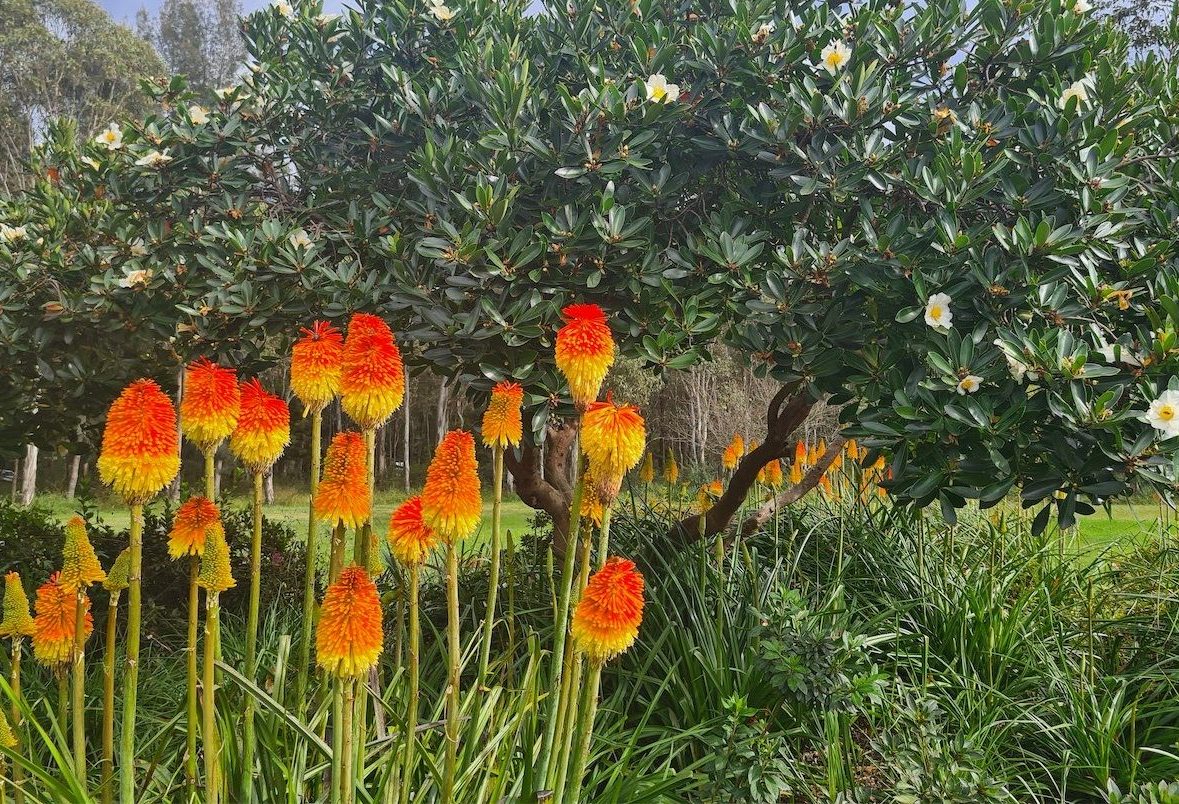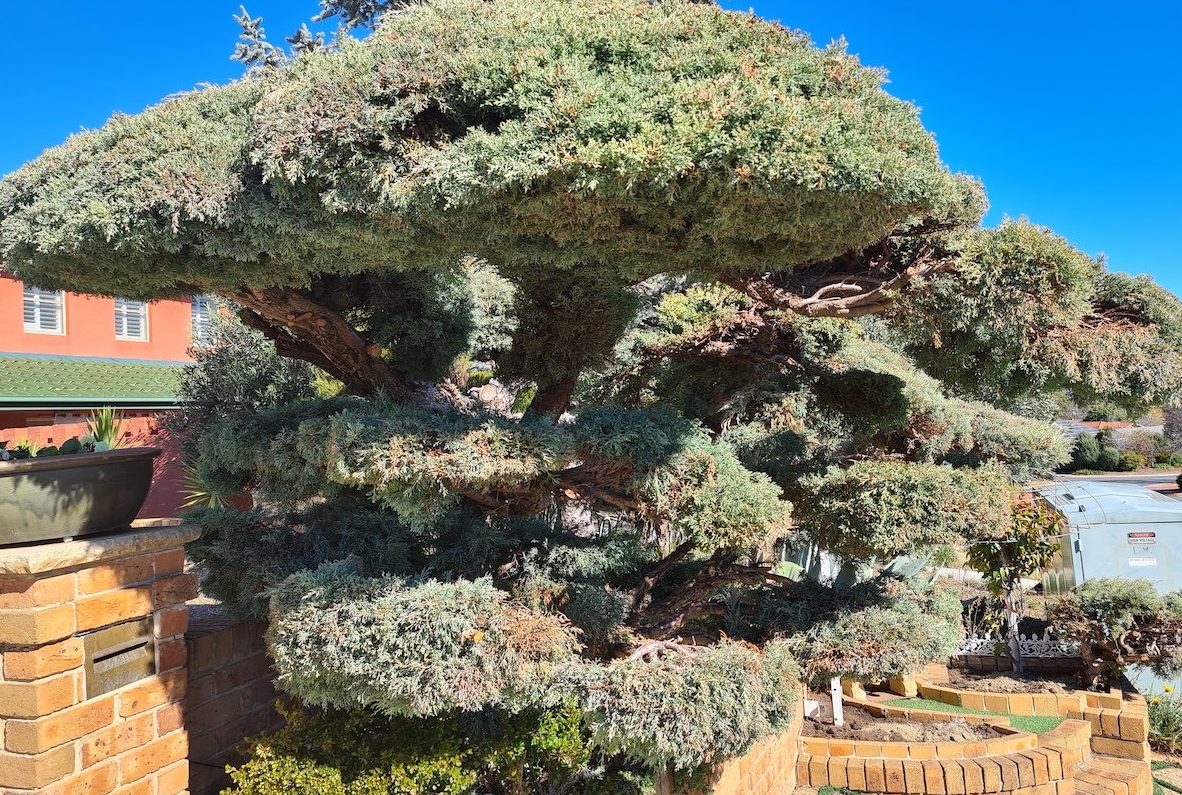
Torch lilies and conifer “cloud” pruning have inspired this week’s gardening column by JACKIE WARBURTON.
FLOWER spikes of stunning torch lilies, at their optimum in autumn and winter, are a magnet for nectar-feeding birds.

Their blooms come in a range of colours from yellows, reds, oranges, soft lemons and whites.
Torch lilies (or red hot pokers) are herbaceous and have clumping foliage that reach up to 60 centimetres high, with flowering spikes towering above the foliage. They grow well in shade, but prefer full sun with good drainage and water in summer.
With repeat blooms, continuous deadheading at the base of the flower spike will increase flowering by letting light into the centre of the plant.
A rhizome, they grow wide-spreading roots underground. Dividing clumps in spring can be done if flowering has been sporadic, but if dividing is not possible, remove offsets around the perimeter of the clump to keep it in check. This is the preferred method as division can sometimes damage the plant’s bloom cycle and take several years to recover.
While sizes vary, one new variety to look out for is Kniphofia “Poco Red”, which is suitable as a border plant in a hot, sunny spot. Its flower stalks dry from the bottom up and are long lasting and terrific for the vase indoors as well.
Also shown in the photo above the flower spikes is fried egg plant (Gordonia sp), a wonderful plant I’ve only seen growing successfully in Canberra on the front nature strip of a garden in Kambah.
It’s a wonderful glossy leaf shrub with beautiful egg-like flowers that fall all at once. Although a Sydney or coastal plant, it might be a little hard to source locally.

THIS is the time of year to tame conifers and give them a tidy up and shape before winter.
An interesting way to prune conifers is in “cloud” formation, which can look fanciful in the garden and be quite a statement piece.
The art of cloud pruning is a Japanese method of training trees and shrubs that resemble clouds known as “niwaki”, which means garden tree. It is distinctly different from a bonsai, a tree in a pot, whereas a niwaki tree is in the ground.
To create a niwaki tree, use a conifer such as black pine or Scots pines, but any shrub with small leaves will work such as olives, buxus or camellias.
Get the tree growing now because, if planted soon enough, pruning and training can begin in the spring.
It can take a few years to get the right shape and balance. If you want to have a go at starting a tree, prune from the bottom to form the base structure, working up to create a pyramid shape.
Snip, snip and more snipping is needed to create the cloud effect. Many tools are required for this technique of pruning such as secateurs, shears and handsaws, plus gloves to protect hands from the sap and to ensure you don’t snip your fingers.
Jottings…
- Spray stone fruit with copper oxychloride now and repeat for a few weeks for leaf curl diseases.
- Keep collecting and composting leaves.
- Divide and cut back herbs such as sage, oregano and thyme.
- Sprinkle manures on garden beds and water in.
Who can be trusted?
In a world of spin and confusion, there’s never been a more important time to support independent journalism in Canberra.
If you trust our work online and want to enforce the power of independent voices, I invite you to make a small contribution.
Every dollar of support is invested back into our journalism to help keep citynews.com.au strong and free.
Thank you,
Ian Meikle, editor





Leave a Reply